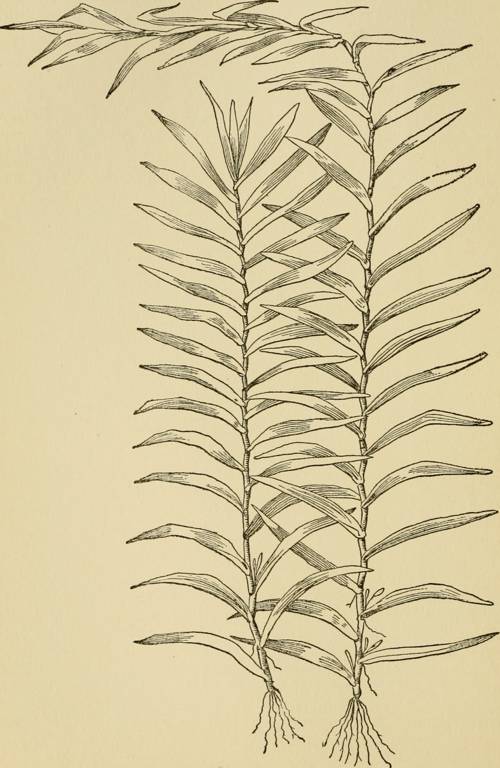
FAQ About Caring for Indoor Aquatic Terrariums

What is an indoor aquatic terrarium?
An indoor aquatic terrarium is a self-contained, glass-enclosed ecosystem designed to replicate aquatic environments. It usually contains water, aquatic plants, and sometimes small aquatic animals or fish. The primary purpose is to emulate a natural underwater landscape for decorative or educational purposes.

What types of plants can be used in an aquatic terrarium?
Common plants suitable for aquatic terrariums include Java fern, Anubias, and Elodea, which thrive in water and require little maintenance. These plants not only enhance the visual appeal but also help in maintaining water quality by absorbing nutrients and producing oxygen.

How do I maintain water quality in an aquatic terrarium?
Maintaining water quality involves regular water changes, monitoring pH levels, and ensuring proper filtration. It's important to avoid overfeeding any aquatic inhabitants, as excess food can decompose and degrade the water quality.

What are the ideal water conditions for an aquatic terrarium?
The ideal water conditions for an aquatic terrarium include a stable temperature (typically between 72-78°F), a pH level between 6.5 and 7.5, and low levels of nitrates and ammonia. Consistency is key to preventing stress on plants and any aquatic life.

Can fish be included in an aquatic terrarium?
Yes, small fish like guppies or bettas can be included if the aquatic terrarium is properly maintained. Ensure the terrarium size is adequate and the water conditions meet the needs of the fish species you wish to include.

How do I choose the right substrate for my aquatic terrarium?
Choosing the right substrate depends on the plants and animals you want to include. Gravel, sand, or specialized aquatic soil can be used. Ensure the substrate provides enough nutrients for plants and is clean to prevent water quality issues.

How often should I clean my indoor aquatic terrarium?
Partial water changes should be done every one to two weeks, removing about 10-15% of the water while cleaning any debris from the substrate. The terrarium's glass walls should also be wiped occasionally to remove algae buildup.

What lighting is best for aquatic terrariums?
LED lights are often recommended because they provide adequate light for plant photosynthesis while being energy efficient. It's crucial to ensure that the lighting is suitable for the specific types of plants you have in the terrarium to promote healthy growth.

How can I prevent algae growth in my aquatic terrarium?
Control algae growth by avoiding overexposure to light, not overfeeding fish, maintaining proper water conditions, and introducing algae-eating species like snails or shrimp if appropriate. Regular cleaning will also help manage algae levels.

What role do plants play in an aquatic terrarium?
Plants in an aquatic terrarium help oxygenate the water, absorb excess nutrients, and provide habitat for aquatic creatures. They also contribute to maintaining the biological balance of the ecosystem by breaking down waste products.

How do I choose the right container for my aquatic terrarium?
The choice of container depends on the size and type of aquatic life you wish to support. Glass or acrylic containers with enough volume for water, plants, and potential inhabitants are ideal. Ensure the container is watertight and allows for adequate lighting.

Can I introduce non-aquatic elements to an aquatic terrarium?
Yes, non-aquatic elements like rocks and driftwood can be added, as they provide a natural aesthetic and habitat complexity. However, ensure these elements are safe for water environments and won't alter pH or release toxins into the water.

What common mistakes should I avoid in maintaining an aquatic terrarium?
Avoid overstocking with fish, neglecting regular maintenance, and using inappropriate substrates or untreated water. Each of these can lead to water imbalance and stress in aquatic life, compromising the terrarium's health.

How can I balance the ecosystem in an aquatic terrarium?
Balance is achieved by maintaining the right proportion of plants and aquatic life, ensuring regular feeding and cleaning schedules, and monitoring water quality parameters. Healthy ecosystems are dynamic yet stable over time.

Is a filter necessary in an aquatic terrarium?
While not always necessary, a filter helps maintain clean water by removing debris and supporting healthy bacteria that break down waste. A small, low-flow filter may be beneficial, particularly if fish are included.

Can I create a self-sustaining aquatic terrarium?
Creating a self-sustaining aquatic terrarium is possible by carefully selecting a balanced combination of plants and microfauna, maintaining light and water parameters, and allowing the ecosystem to mature over time. However, occasional maintenance may still be required.

How do I introduce new plants or animals to my aquatic terrarium?
Acclimate new plants or animals slowly to the terrarium's conditions. This can be done by gradually adding water from the terrarium to their temporary housing to adjust them to temperature and pH levels before full introduction.

What are the benefits of having an aquatic terrarium?
Aquatic terrariums provide aesthetic pleasure, educational value, and stress reduction through the observation of natural processes. They also encourage learning about ecosystems, sustainability, and the care of living organisms.

Can an aquatic terrarium support amphibians like frogs or newts?
Some small amphibians can be included if the terrarium is designed to meet their specific habitat needs, such as providing both aquatic and terrestrial areas. Always research the species requirements before introduction.

How do I handle pest infestations in an aquatic terrarium?
For pest control, introduce natural predators if suitable (e.g., fish that eat mosquito larvae) or manually remove pests. Avoid chemical solutions as they can harm aquatic species. Regular maintenance and observation help prevent infestations.
